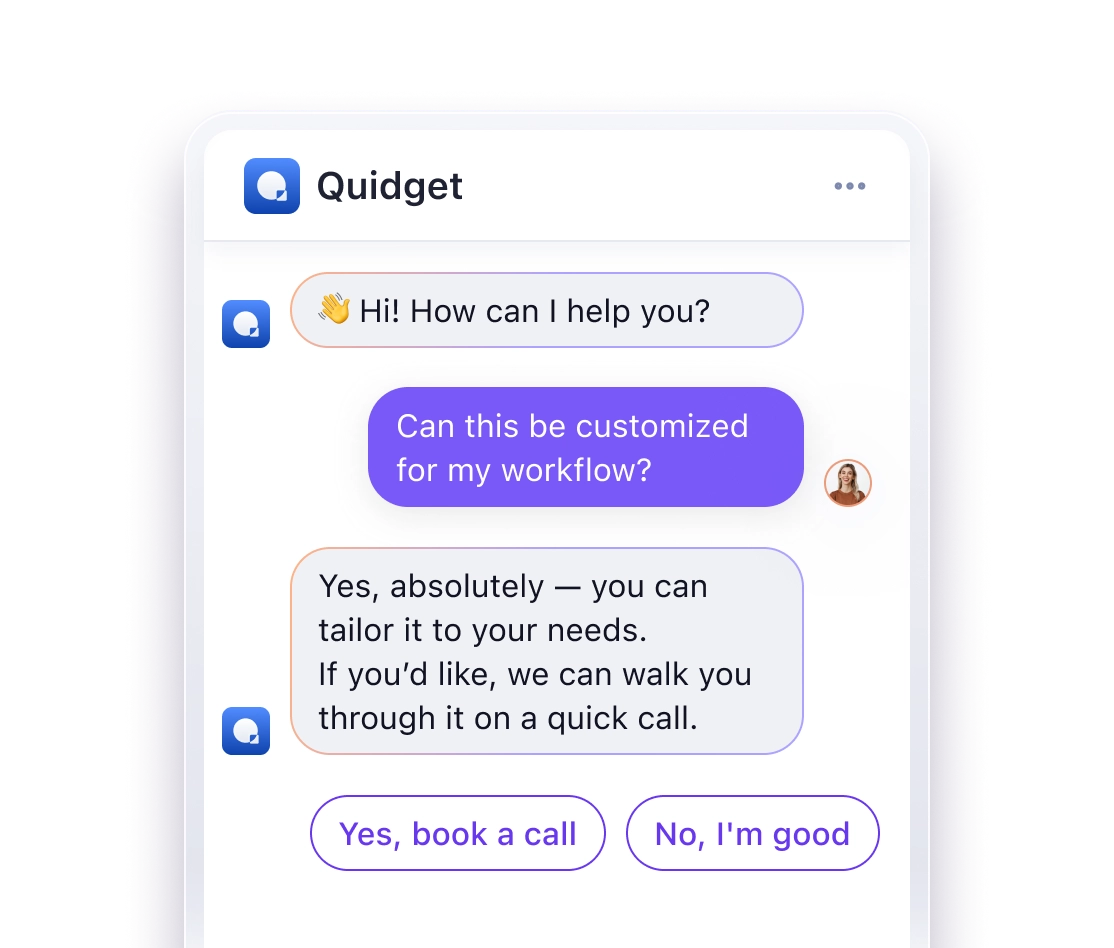Open-source AI chatbot platforms give developers full control over their projects, offering customizable, cost-effective solutions without vendor restrictions. In 2025, the top platforms include BotPress, Rasa, DeepPavlov, Microsoft Bot Framework, and Dialogflow. Here’s a quick breakdown of their strengths:
- BotPress: Ideal for quick deployment with visual tools and API integration.
- Rasa: Best for enterprise-scale projects with full customization and on-premise deployment.
- DeepPavlov: Tailored for advanced NLP tasks and research.
- Microsoft Bot Framework: Great for Azure-based projects with strong enterprise support.
- Dialogflow: Simplifies chatbot building with easy integrations and Google Cloud support.
Quick Comparison
| Platform | Customization Level | Technical Expertise Needed | Scalability | Best For |
|---|---|---|---|---|
| BotPress | High | Moderate | Enterprise-ready | Quick deployment |
| Rasa | Very High | Advanced | Highly scalable | Complex enterprise projects |
| DeepPavlov | High | Advanced (NLP expertise) | Resource-intensive | NLP research and development |
| Microsoft Bot Framework | Moderate | Azure knowledge required | Enterprise-grade | Azure-based enterprise apps |
| Dialogflow | Medium | Basic to moderate | Cloud-native | Small businesses or beginners |
These platforms cater to different needs, from rapid development to advanced NLP and large-scale enterprise projects. Choose the one that aligns with your goals and technical capabilities.
Rasa: An Open-Source Chatbots Platform
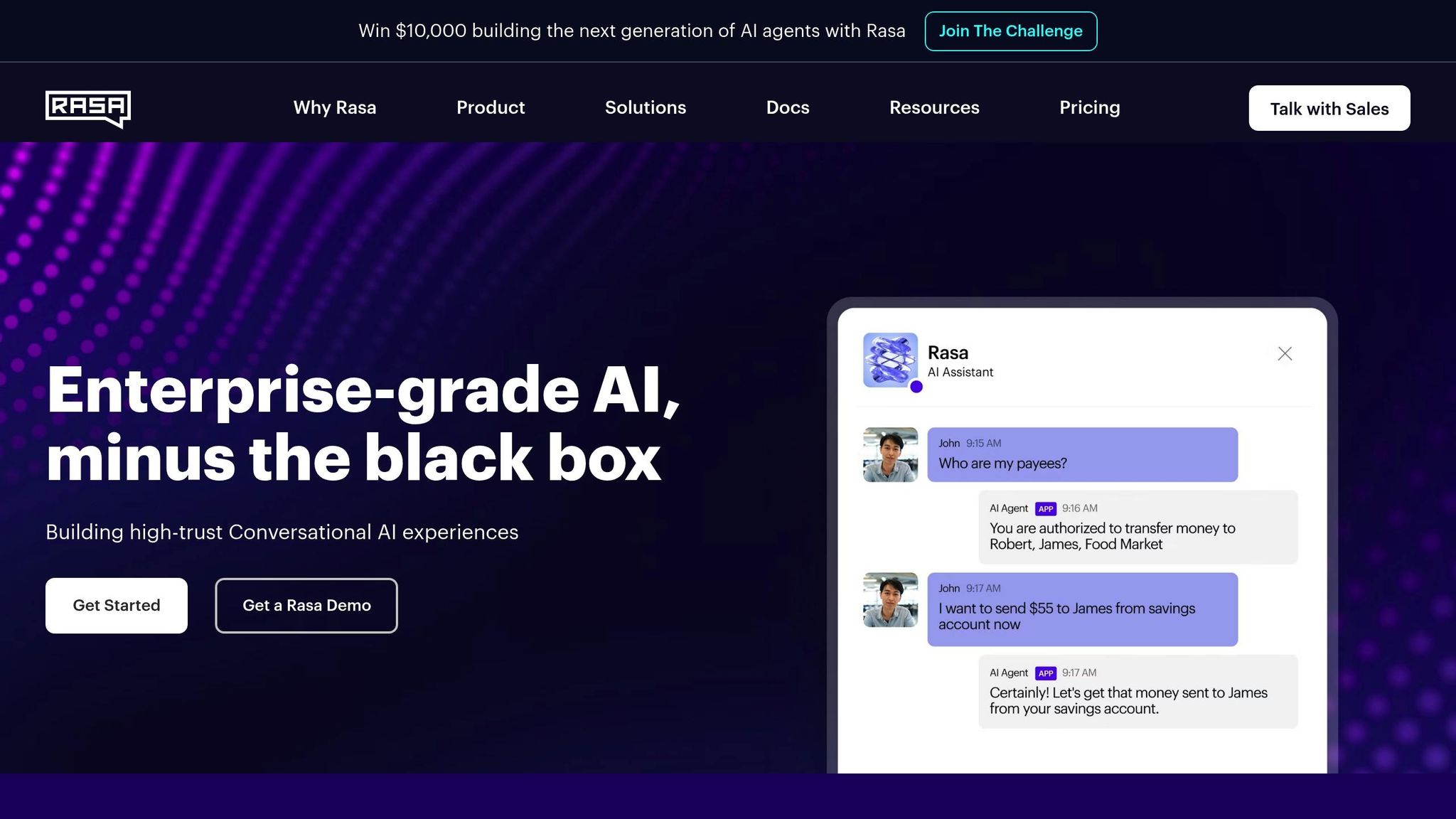
1. BotPress
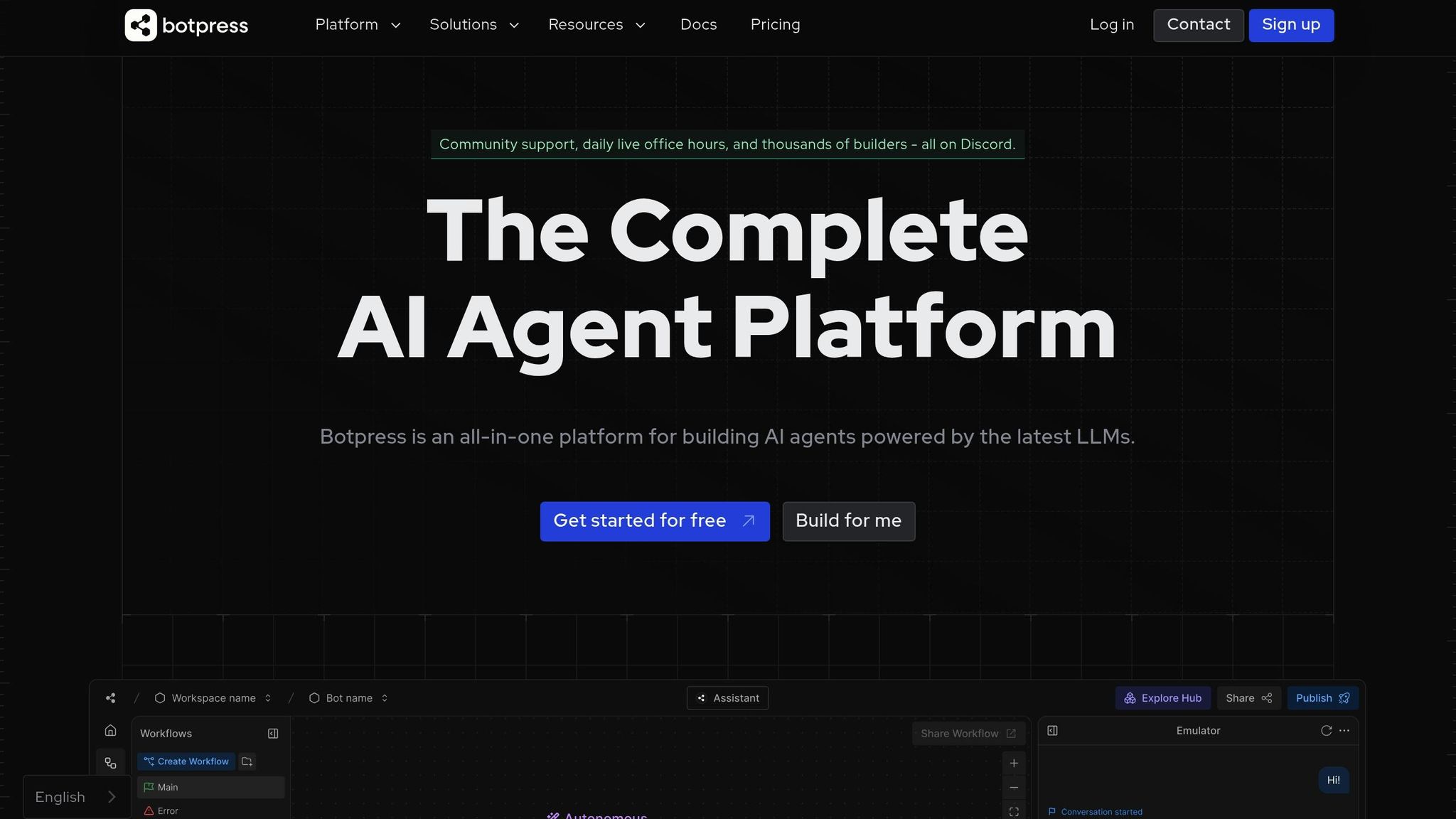
BotPress is an open-source chatbot platform known for its blend of visual development tools and extensive customization. With over 1 billion messages handled, it has proven its capability for large-scale use.
Visual Development Environment
BotPress Studio provides an easy-to-use IDE for building and testing chatbots. Its drag-and-drop interface simplifies creating even complex conversational flows while allowing full control of the underlying code. This makes it accessible for beginners while offering flexibility for advanced users.
Customization Options
BotPress lets developers fine-tune both the look and behavior of their chatbots:
| Feature | Customization Options |
|---|---|
| Visual Elements | Adjust CSS for buttons, headers, and backgrounds |
| Behavior | Use JavaScript for features like full-screen mode |
| Integration | RESTful API with JSON support |
| Authentication | Bearer tokens via PAT or Bot Tokens |
API Integration Framework
The platform provides a RESTful API through https://api.botpress.cloud, enabling bot management, conversation handling, user administration, and configuration tasks.
Developer Support System
The BotPress community is a valuable resource for developers. As one user shared:
"Botpress is a great platform with a strong community of developers around the world that are welcoming and open to sharing their time, resources, and elevating best practices among bot builders." – @CarolynM
In addition to community support, BotPress offers daily live office hours for technical help and access to the BotPress Academy, which includes courses, tutorials, and detailed documentation.
Performance Monitoring
BotPress includes built-in monitoring tools like the ‘Issues’ tab, helping developers track performance and address errors in real time.
Custom Integration Examples
Developers can enhance BotPress with custom CSS. For instance, to create a branded chatbot button, you can use the following code:
.bpw-floating-button { background-image: url(YOUR_URL); } This approach ensures your chatbot aligns with your brand identity.
These features make BotPress a go-to choice for developers seeking a customizable and scalable chatbot solution.
2. Rasa
Rasa is an open-source framework designed for building AI-powered chatbots, with over 50 million downloads. It combines natural language understanding (NLU) and dialogue management, making it suitable for handling complex conversations.
Core Components and Architecture
Rasa’s architecture allows developers to create highly customized chatbots.
| Component | Function | Key Features |
|---|---|---|
| Rasa NLU | Language Processing | Intent recognition, entity extraction |
| Rasa Core | Dialogue Management | Context tracking, response selection |
| CALM (Pro) | Generative AI | Advanced language modeling, enterprise analytics |
Development Environment
Rasa uses key files to define chatbot behavior:
- nlu.yaml: Handles language models.
- domain.yml: Defines bot responses.
- stories.yml: Maps conversation flows.
- actions.py: Contains custom actions.
API Integration Framework
Rasa provides HTTP API access for external integrations. To activate the API, use the --enable-api parameter. For enterprise implementations, Rasa offers both token-based and JWT authentication, ensuring high security standards.
Enterprise Features
Rasa Pro enhances the open-source version with features tailored for enterprise needs:
- Conversational AI powered by Language Models (CALM)
- In-depth analytics tools
- End-to-end testing capabilities
- Advanced security scanning
- Protocols for handling sensitive data (PII)
Community and Support
Rasa boasts a thriving community, with over 15,000 forum members and 750 contributors. According to Rasa.com:
"Rasa offers a flexible, secure, and future-proof alternative that empowers enterprises to seamlessly maintain control, innovate confidently, and scale conversational AI systems."
This active community helps developers refine and enhance their chatbot projects.
Customization Capabilities
Rasa allows developers to tweak large language model (LLM) behavior by overriding functions like rephrase and select_response_examples.
Security and Deployment
Rasa stands out by offering on-premise deployment options, ensuring strict security compliance. It also supports scalable deployment through environment variables such as SANIC_WORKERS, which optimize server processes.
These features make Rasa a powerful choice for developers seeking deep customization and enterprise-level functionality in chatbot development.
3. DeepPavlov
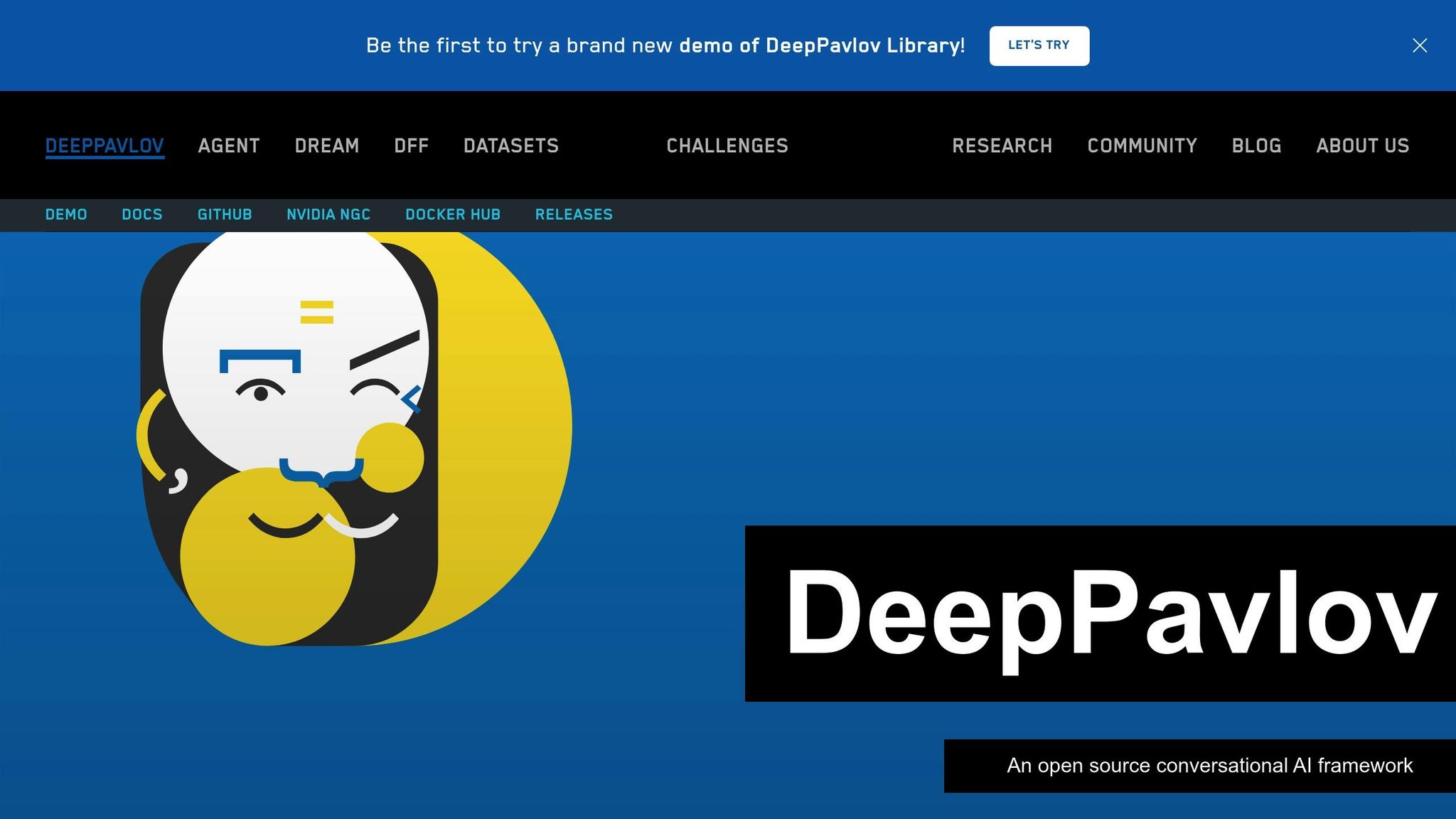
DeepPavlov is an open-source framework tailored for creating AI chatbots and virtual assistants, particularly for natural language processing (NLP) tasks.
Similar to BotPress and Rasa, it provides a range of tools aimed at developers, with a strong focus on NLP capabilities.
Core Architecture
DeepPavlov is built around modular components designed to tackle complex NLP challenges. It supports advanced models like BERT and includes GPU optimization to boost performance.
| Component | Purpose | Key Capability |
|---|---|---|
| NLP Pipeline | Language processing | Pre-trained models and custom training |
| API Services | Integration | REST endpoints and Docker deployment |
| Agent Framework | Conversation management | Multi-skill conversational solutions |
| Development Tools | Implementation | Python, CLI, and API access |
API Integration
DeepPavlov models can be deployed as REST services through the following endpoints:
- /model: Main endpoint for interacting with models.
- /probe: Monitors system health.
- /api: Handles additional API functions.
- /docs: Provides access to API documentation.
- /metrics: Tracks performance.
These REST endpoints make it simple to integrate DeepPavlov into existing systems, ensuring seamless deployment.
Technical Requirements
DeepPavlov is compatible with major operating systems and requires:
- Python: Version 3.6–3.11.
- RAM: Between 4 GB and 16 GB, depending on the model.
- OS: Linux, Windows 10+ (via WSL/WSL2), or macOS (Big Sur or later).
Developer Community
DeepPavlov has a strong following, with over 5,900 GitHub stars, 460,000+ Pip downloads, and more than 1,000,000 Docker downloads. Founder Mikhail Burtsev explains:
"DeepPavlov conversational AI technology is packed in an easy-to-deploy GPU-optimized container hosted on NGC to empower developers around the world to build production-ready, scalable, and reliable solutions as fast as never before."
Implementation Areas
DeepPavlov is ideal for a variety of applications, including:
- Call center automation
- Customer service systems
- Question-answering platforms
- Sentiment analysis tools
- NLP research projects
Its versatility allows it to fit into many chatbot-related use cases.
Development Support
Developers have access to a wide range of resources, such as:
- Community calls
- Annual State of the Union meetings
- Developer forums
- Step-by-step tutorials
- Contributor programs
DeepPavlov’s modular design, ease of integration, and active developer community make it a strong option for building advanced chatbot solutions.
sbb-itb-58cc2bf
4. Microsoft Bot Framework
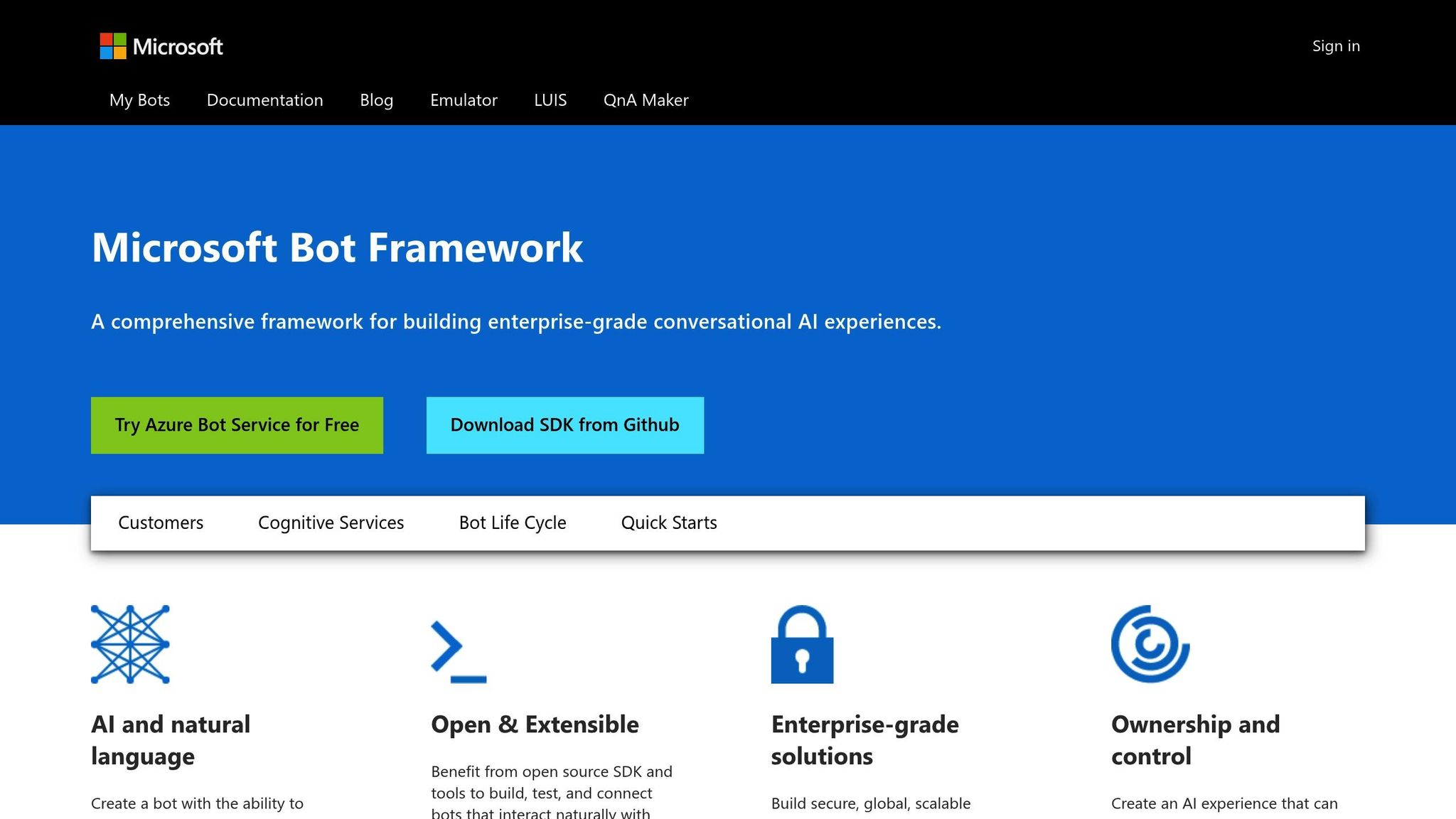
Microsoft Bot Framework is a platform designed for creating AI chatbots. It combines customizable user interface elements with strong integration capabilities. As an open-source tool, it offers flexibility for developers looking to build tailored AI solutions.
Core Architecture & Customization
The Bot Framework SDK allows developers to fine-tune features using its Web Chat control. Customization options include:
| Component | Customization Options |
|---|---|
| Chat Interface | Adjust colors, sizes, and placement |
| Chat Bubbles | Modify font styles and background colors |
| Avatars | Add custom images or initials |
| Container | Set height and width |
| Activities | Enable custom rendering via middleware |
API Integration System
The framework uses a REST-based structure to connect with third-party services. Its Bot Connector service facilitates seamless message exchanges across various platforms. Key integration features include:
- Direct Line API for client-to-bot communication
- REST endpoints for easy connectivity
- JSON-based data handling
- A standardized schema for consistent interaction
- SDK support for C# and Node.js
Developer Resources
Microsoft provides an array of tools to assist developers:
| Tool | Purpose |
|---|---|
| Bot Framework Emulator | Testing and debugging bots |
| Azure Blob Storage | Storing conversation transcripts |
| Inspection Middleware | Monitoring and analyzing performance |
| SDK Repositories | Access to code examples and guides |
"For new bot building, Microsoft recommends considering Microsoft Copilot Studio"
These tools are designed to streamline the development process and offer technical support.
Technical Support
Developers can access support through several channels, including Stack Overflow (using the botframework tag), Gitter.IM, SDK-specific repositories, and official documentation. The framework supports JavaScript, C#, and Python SDKs, though the Java SDK is being phased out.
Implementation Example
One standout feature is its GitHub integration, which allows developers to create custom components like repository cards. This is achieved through the Web Chat middleware pipeline, enabling unique rendering of activities and attachments.
With its deep customization options, reliable API connectivity, and robust developer tools, Microsoft Bot Framework is a solid choice for building AI-driven chatbots.
5. Dialogflow
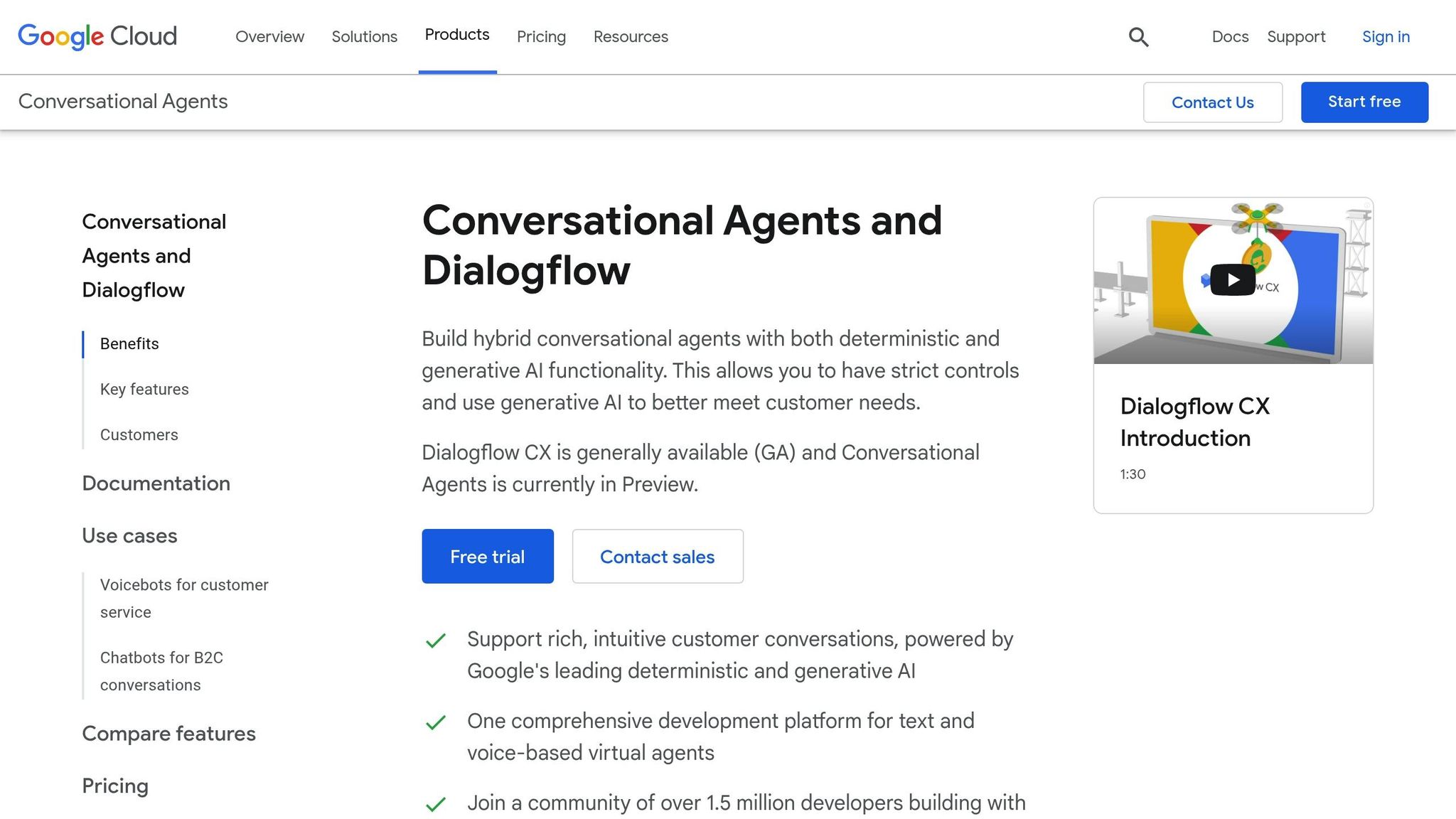
Dialogflow is a platform designed to understand natural language, offering a balance between easy setup and extensive customization. It simplifies the creation of conversational interfaces while giving developers plenty of control.
Customization Features
Dialogflow provides developers with tools to tweak the Messenger interface to match their needs. Here’s how you can customize key elements:
| Component | Customization Options |
|---|---|
| Chat Window | Background colors, window dimensions |
| Message Area | Bot message styling, user message design |
| Input Section | Send icon colors, input field layout |
| Button Elements | Custom button creation and styling |
| Event Handling | Use of the df-messenger-loaded event |
Integration Capabilities
Dialogflow supports seamless integration with various platforms, making it versatile for different use cases:
| Platform | Integration Type |
|---|---|
| Google Assistant | Native integration |
| Facebook Messenger | Direct connection |
| Slack | Built-in support |
| Telegram | Ready-to-use setup |
| Custom Platforms | API and webhook support |
Developer Support System
Google offers a range of resources to assist developers working with Dialogflow:
- Google Cloud Community forums
- Google Developer Groups (GDGs)
- Google Developer Experts program
- Comprehensive documentation with examples
- Blogs and video tutorials
"Dialogflow is a natural language understanding platform that makes it easy to design and integrate a conversational user interface into your mobile app, web application, device, bot, interactive voice response system, and so on."
Technical Implementation
Dialogflow’s customization relies on CSS, allowing developers to modify interface elements without diving into complex code. For example, adjusting the bot message design can be done by simply changing the --df-messenger-bot-message CSS variable. Its straightforward setup makes it an excellent choice for small businesses or developers just starting with chatbots.
Compared to competitors like Amazon Lex or Wit.ai, Dialogflow stands out with a broader range of pre-built integrations.
Platform Comparison
Each platform has its own strengths and challenges, which makes choosing the right one a matter of priorities and needs.
Core Platform Capabilities
| Platform | Customization | Technical Requirements | Scalability | Community Support |
|---|---|---|---|---|
| BotPress | High – Visual IDE with API access | Moderate | Enterprise-ready | Growing |
| Rasa | Very high – Full codebase access | Technical expertise | Highly scalable | Active and large |
| DeepPavlov | High – ML model customization | Advanced ML expertise | Resource-intensive | Strong technical |
| Microsoft Bot Framework | Moderate – Azure-focused | Azure knowledge required | Enterprise-grade | Microsoft-backed |
| Dialogflow | Medium – Limited core changes | Basic to moderate | Cloud-native | Google-supported |
While the core metrics provide a snapshot, the actual development experience can differ greatly between platforms.
Development Experience
BotPress stands out with its Studio IDE, which combines visual workflows and functionality that even non-technical team members can use effectively. On the other hand, Rasa is ideal for creating AI assistants capable of handling complex conversations, though it comes with a steeper learning curve.
Resource Requirements
Platforms like DeepPavlov and Rasa demand more computational power, particularly for custom ML models. In contrast, BotPress is a more accessible choice for teams with limited resources, offering flexibility through its API and SDK ecosystem.
Integration Capabilities
Microsoft Bot Framework shines in enterprise settings, especially within Azure environments. However, its reliance on Azure may be a drawback for teams looking for cloud-agnostic solutions.
Community and Support Structure
| Platform | Documentation Quality | Community Size | Enterprise Support |
|---|---|---|---|
| Rasa | Comprehensive | Large and active | Available (Rasa Pro) |
| BotPress | Good and growing | Medium | Commercial options |
| DeepPavlov | Technical focus | Smaller, technical | Limited |
| Microsoft Bot Framework | Extensive | Large enterprise | Azure support |
| Dialogflow | Well-structured | Google ecosystem | GCP support |
These platforms balance customization, scalability, and community engagement, each in its own way.
Development Time Investment
BotPress allows for a faster setup thanks to its visual tools. Rasa, while requiring more time and effort, provides a higher degree of control. These differences make it easier for developers to choose a platform that aligns with both their immediate needs and long-term plans.
Summary and Recommendations
Here’s a breakdown of the strengths of each platform and recommendations based on specific development needs:
For Enterprise-Scale Projects
If you’re building large-scale applications that need extensive customization and room to grow, Rasa is the way to go. It offers full control, making it perfect for intricate use cases.
For Organizations Using Azure
For teams already working with Azure, the Microsoft Bot Framework is a natural fit. It integrates smoothly with Azure services and provides enterprise-grade security.
For Highly Regulated Industries
Industries with strict compliance and security requirements should consider OpenDialog, which is specifically designed for these sensitive environments.
For Quick Deployment
Need to get up and running fast? BotPress is ideal, thanks to its intuitive visual development tools.
For Research and Advanced NLP
For advanced natural language processing (NLP) projects or research purposes, DeepPavlov stands out. It offers pre-trained models and benchmarking tools that cater to cutting-edge NLP needs.
Here’s a quick comparison to help you decide:
| Use Case | Recommended Platform | Key Advantage |
|---|---|---|
| Complex Enterprise Solutions | Rasa | Full customization and control |
| Azure Integration | Microsoft Bot Framework | Seamless Azure service integration |
| Regulated Industries | OpenDialog | Built for compliance and security |
| Rapid Development | BotPress | Easy-to-use visual tools |
| Research Projects | DeepPavlov | Advanced NLP tools and models |
"Rasa is a go-to framework for developers who want to build chatbots tailored to specific business needs… Rasa provides complete control over how your chatbot functions, letting you design workflows, responses, and integrations exactly the way you want." – Codewave
Looking for a fast, no-code chatbot solution? Check out Quidget for quick results.



